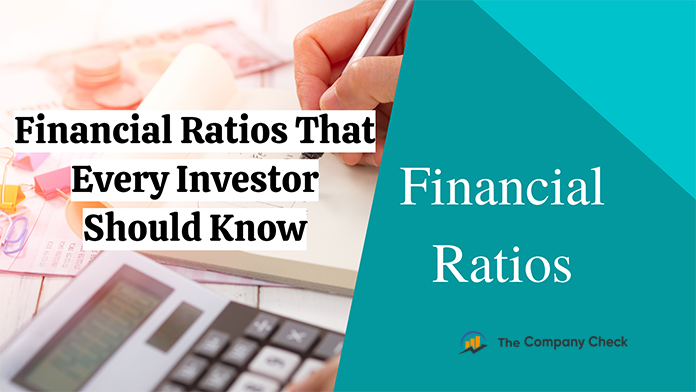In order to study the reports of an organization, investors should be well versed with the basic concepts of the different financial ratios. The annual reports of a lot of organizations are quite lengthy which comprise of various money financial jargon. In addition, in the event that you don’t understand what these terms mean, you won’t be able to read the reports efficiently. All things considered, there are various financial ratios that have made the life of speculators quite simple. Now, you do not need to make a number of calculations and you can just use these financial ratios to understand the gist.
Important Financial Ratios for the Investors
Given below is a list of different financial ratios:
Valuation Ratios
These ratios are additionally called Price Ratios and are utilized to discover whether the share price is overvalued, undervalued, or reasonably valued. Valuation Ratios are relative and are commonly more helpful in contrasting the organizations in a similar sector (apple to apple comparison).
Price to Earnings Ratio (P/E) Ratio
The price to earnings ratio is one of the most broadly used ratios by financial specialists all through the world. PE ratios are calculated by:
P/E ratio = (Market Price per share/Earnings per share)
An organization with a lower PE ratio is considered underestimated compared with another organization in the same sector with a higher PE ratio. The normal PE ratio value varies from industry to industry.
Price to Book Value (P/BV) Ratio
The book value is referred to as the net resource value of an organization. It is determined as total assets minus intangible assets (patents, goodwill) and liabilities. The Price to book value (P/B) ratio can be determined through this formula:
P/B ratio = (Market price per share/ book value per share)
As a thumb rule, a company with a lower P/B ratio is undervalued compared to the companies with a higher P/B ratio. However, this ratio also varies from industry to industry.
PEG Ratio
PEG Ratio or Price/Earnings to growth ratio is utilized to discover the value of a stock by thinking about the organization’s earning growth. This ratio is viewed as more helpful than the PE ratio as the PE ratio totally disregards the organization’s growth rate. PEG Ratio can be calculated using this formula:
PEG ratio = (PE ratio/ Projected annual growth in earnings)
A company with PEG < 1 is good for investment. Stocks with a PEG ratio of less than 1 are considered undervalued relative to their EPS growth rates, whereas those with ratios of more than 1 are considered overvalued.
Price to Sales (P/S) Ratio
The stock’s Price to Sales Ratio (P/S) gauges the cost of an organization’s stock against its annual sales. It tends to be calculated using this formula:
P/S ratio = (Price per share/ Annual sales per share)
Price to Sales Ratio can be utilized to compare organizations in a similar industry. Lower P/S ratio implies that the organization is undervalued.
Dividend Yield
Dividends are the profits that the organization share with its shareholders as chosen by the board of directors. Dividend yield can be calculated as:
Dividend yield = (Dividend per share/ price per share)
A developing organization may not give a good dividend as it utilizes that profit for its expansion. Be that as it may, capital appreciation in a developing organization can be large. Then again, settled enormous organizations give a good dividend. Yet, their growth rate is saturated. Consequently, it depends totally on investors whether they want a high yield stock or growing stock.
Dividend Payout
Organizations don’t distribute its entire profit to its shareholders. It might save a couple of parts of the profit for its expansion or to complete new plans and share the rest with its investors. Dividend Payout tells you the level of the profit distributed as dividends. It can be calculated as:
Dividend payout = (Dividend/ net income)
For an investor, a steady dividend payout is favorable. However, a very high dividend payout like 80-90% maybe a little dangerous.
Profitability Ratio
Profitability Ratios are utilized to measure the adequacy of an organization to produce profits from its business. A couple of the main financial ratios for speculators to approve the organization’s profitability ratios are discussed below:
Return on Assets (ROA)
Return on Assets (ROA) is an indicator of how productive an organization is relative to its total assets. It can be calculated as:
ROA = (Net pay/Average total assets)
An organization with a higher ROA is better for investment as it implies that the organization’s administration is proficient in utilizing its assets for generating income. Always select organizations with high ROA to invest in.
Earnings Per Share (EPS)
EPS is the annual earning of an organization expressed per common share value. It is calculated using the formula
EPS = (Net Income – Dividends on Preferred Stock)/Average Outstanding Shares
As a dependable guideline, organizations with expanding profit per share for the last couple of years can be considered as a healthy sign.
Net Profit Margin (NPM)
Increased Revenue doesn’t generally mean increased profits. The profit margin uncovers how great an organization is at changing over revenue into benefits available for shareholders. It can be calculated as:
Overall revenue = (Net Income/Sales)
A company with a steady and increasing profit margin is suitable for investment.
Return on Equity (ROE)
ROE is the measure of overall income returned as a percentage of shareholders’ equity. It is calculated by using the formula:
ROE= (Net Income/Average Stockholder Equity)
It shows how great is the organization in rewarding its investors. A higher ROE implies that the organization creates a higher profit from the cash that the investors have contributed. Always invest in companies with an average ROE for the last three years greater than 15%.
For more information, visit the website of The Companycheck



